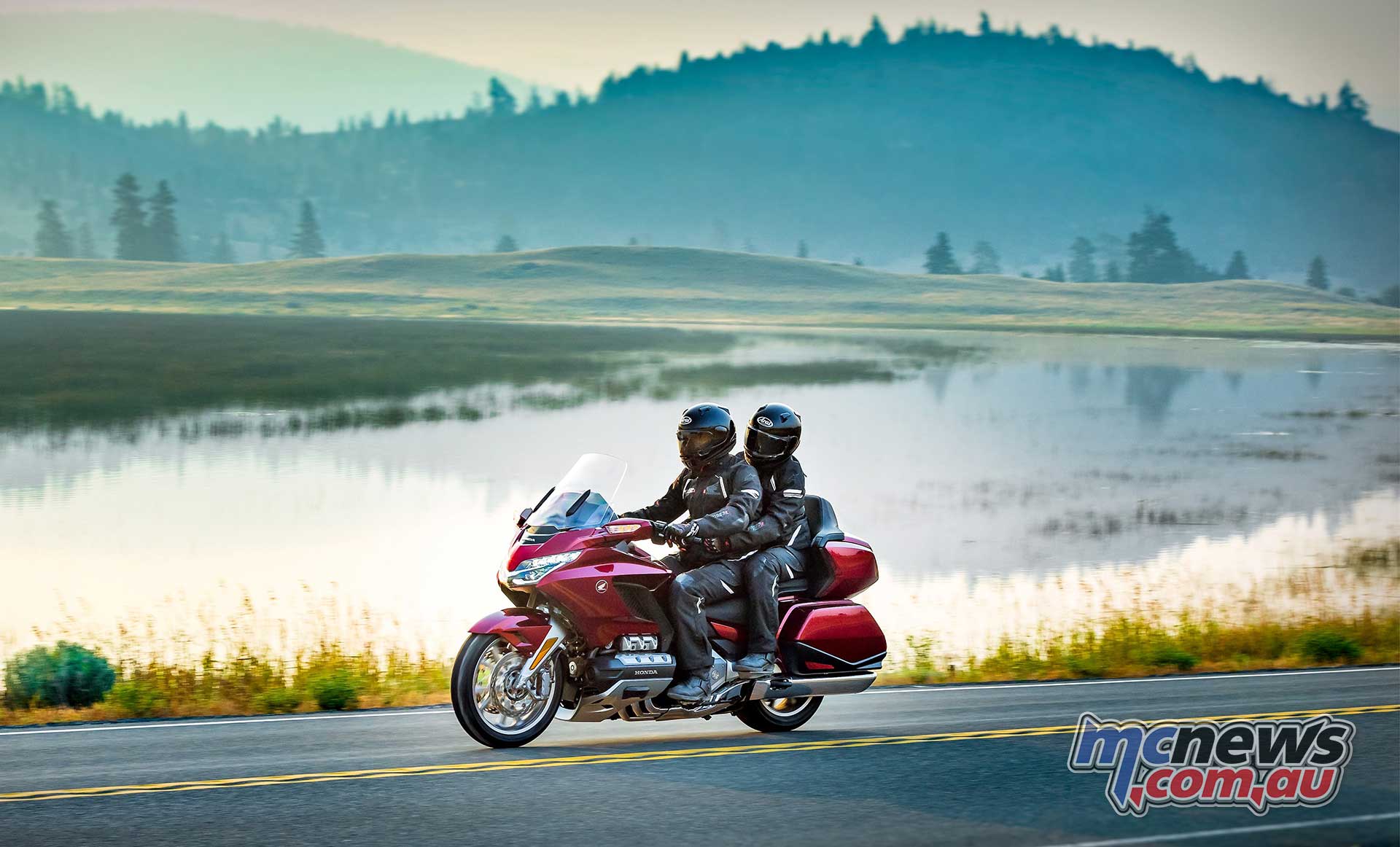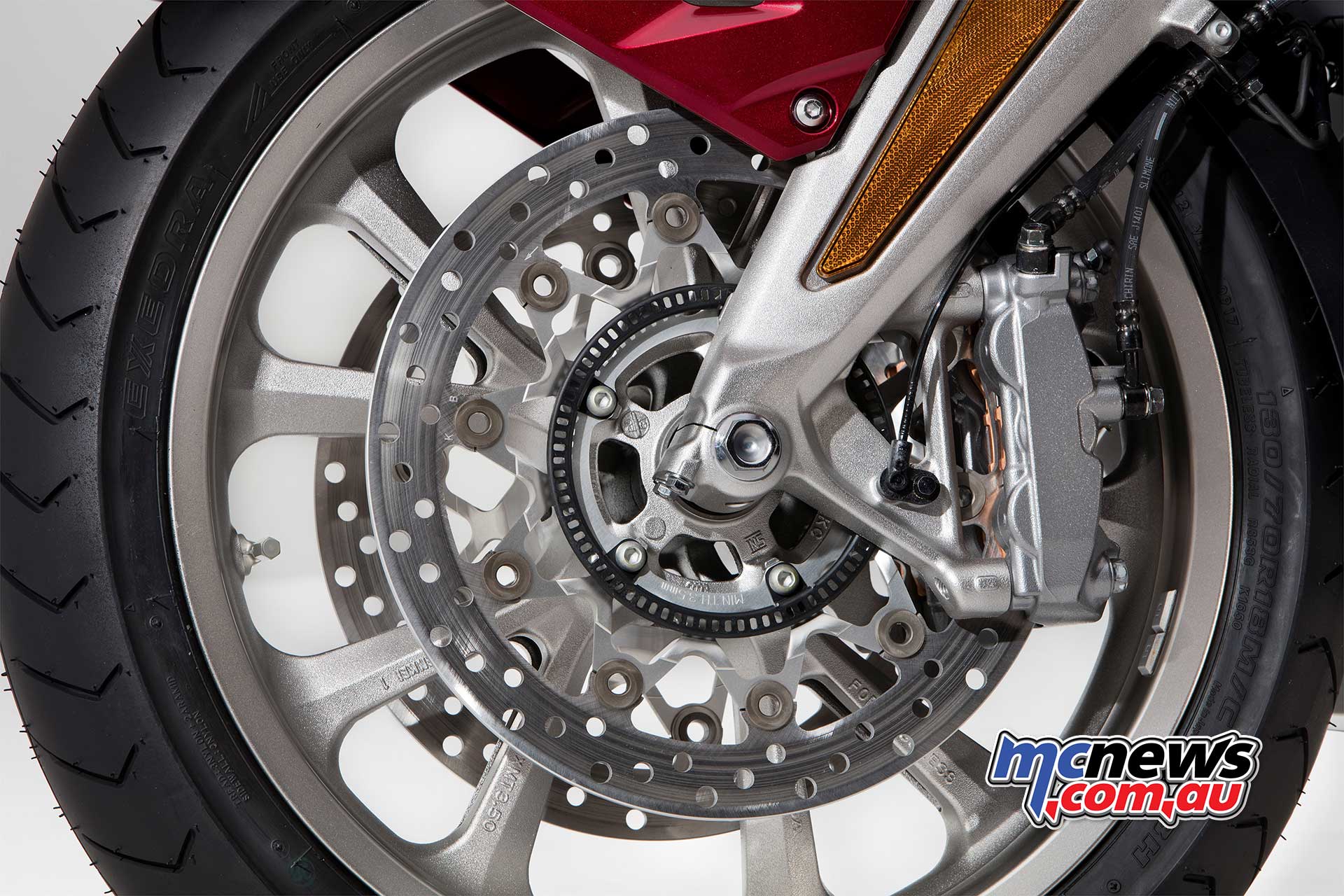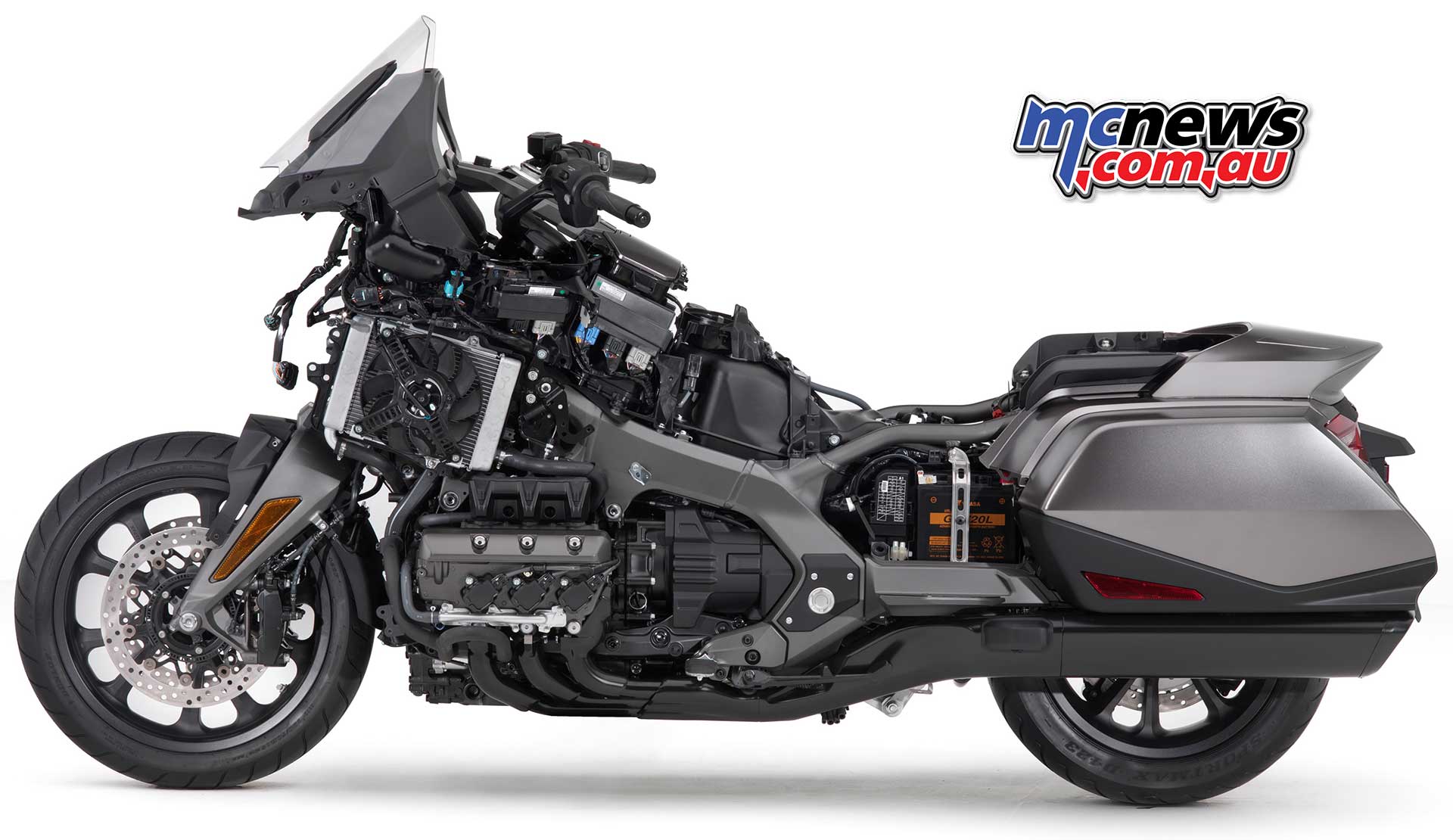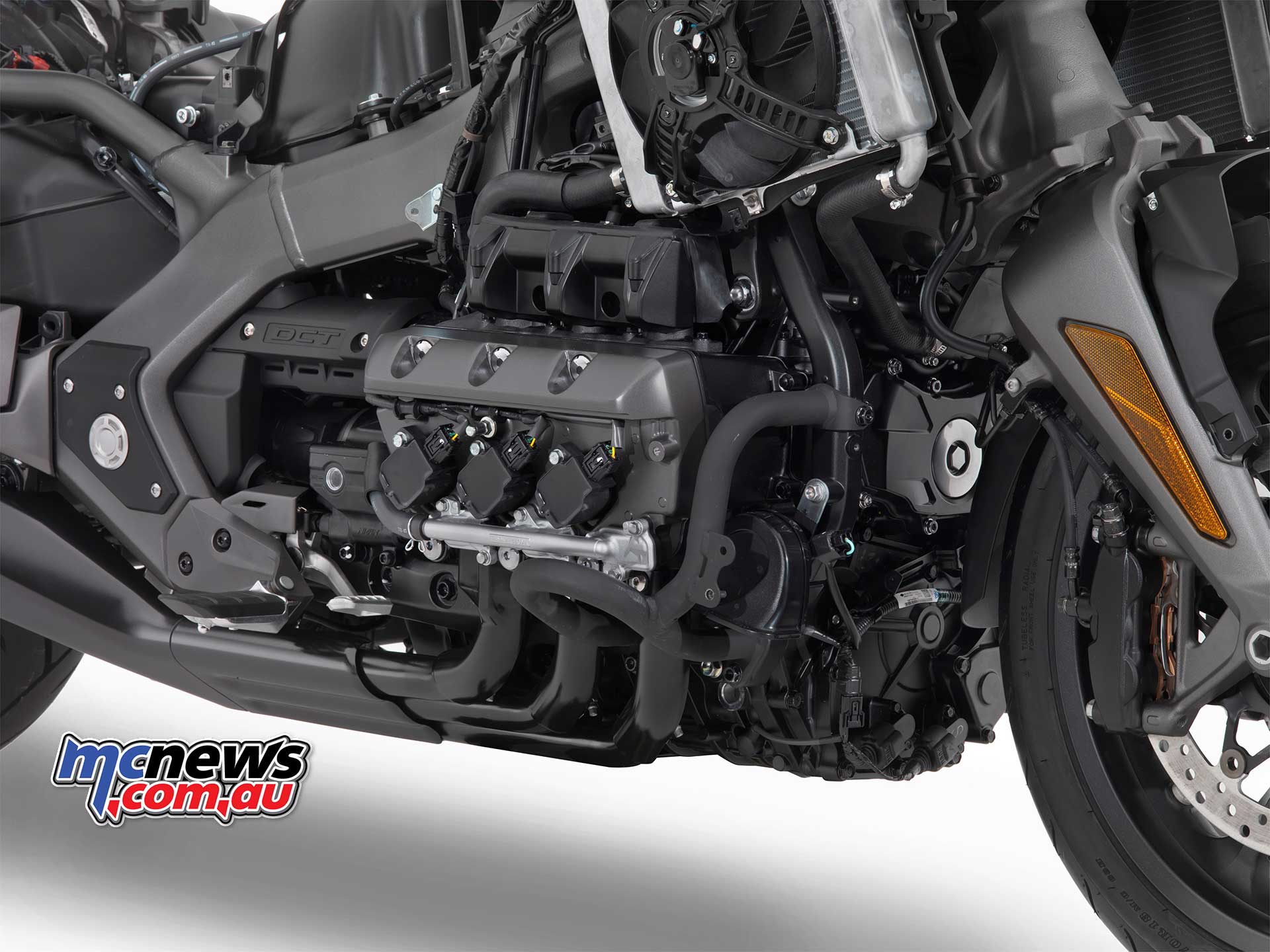2018 Honda GoldWing Chassis
- Total weight saving of 48kg compared to the previous model
- Brand new aluminium beam frame moves the engine and rider forward
- Double wishbone front suspension and redesigned Pro-Arm
- Front and rear damping level adjusts to suit riding mode selected
- Rear spring preload electrically adjustable
- Dual-Combined Braking System (D-CBS)
The new Gold Wing’s die-cast aluminium twin beam frame is designed to package the (now much more compact) engine in a tighter space, 40mm further forward. Its structural thickness has been optimised in each area to deliver a smooth and stable ride, from walking speed upwards, whether on tight city streets or out on the open road. The frame and swingarm together are 2kg lighter than the previous design.
The riding position for rider and pillion is now 36mm forward, and thanks to the dynamic of the double wishbone front suspension (and the angles the double wishbones are set at) the back of the front tyre under full suspension compression is 24mm forward.
 Another benefit of the double wishbone front suspension is the reduction in sliding friction (from bump deflections and steering input) that a standard telescopic fork creates as the stanchions travel up and down in the fork leg; the new Gold Wing front end is 30% smoother. Bearings are used in all shaft bush areas for steering and suspension stroke, further reducing friction.
Another benefit of the double wishbone front suspension is the reduction in sliding friction (from bump deflections and steering input) that a standard telescopic fork creates as the stanchions travel up and down in the fork leg; the new Gold Wing front end is 30% smoother. Bearings are used in all shaft bush areas for steering and suspension stroke, further reducing friction.
The steering input – via the dual fork holders – is also separated from the suspension provided by the single shock absorber and the Gold Wing’s yaw is now 40% nimbler and easier to steer. In addition, a patented steering cross tie-rod connects the handlebars to the front axle and the position of the handlebar pivot with less mass around it (plus siting of the handlebars) delivers an entirely natural feel to the rider.
The Dual Combined Brake System (D-CBS) optimally distributes braking force to the front and rear wheels. Whereas the ABS was operated by 2 motors on the previous model, both have been replaced by one smaller and lighter circulation type ABS modulator which has been integrated with the brake ECU, resulting in a 1.3kg weight saving for the braking system. It also operates in linkage with the current Riding Mode of choice, automatically adjusting the braking characteristics to the riding situation, enhancing security. Dual 320mm front discs are gripped by 6 piston calipers, the rear 316mm disc by a 3-piston caliper.
 A first for Honda is the Gold Wing’s new Pro-Arm; the old design used tapered bearings plus pivot point plates of the necessary thickness to provide correct rigidity. The new Pro-Arm design uses a redesigned (patent-pending) pivot shaft structure and attaches to the frame on its left side. The right side serves as a maintenance access.
A first for Honda is the Gold Wing’s new Pro-Arm; the old design used tapered bearings plus pivot point plates of the necessary thickness to provide correct rigidity. The new Pro-Arm design uses a redesigned (patent-pending) pivot shaft structure and attaches to the frame on its left side. The right side serves as a maintenance access.
This has changed the stress and forces on the frame’s swingarm pivot plates, allowing much greater freedom of design and making the machine easier to manage; it also contributes to stability. Pro-Link provides progressive suspension action and comfort – the link plates have been optimised and spherical joints are used throughout, cancelling out torsion.
 Damping level is also adjusted electrically relative to the riding mode selected by the rider. Stepper motors housed within the front and rear shock absorbers move needles to control oil flow, tailoring damping force for the riding situation.
Damping level is also adjusted electrically relative to the riding mode selected by the rider. Stepper motors housed within the front and rear shock absorbers move needles to control oil flow, tailoring damping force for the riding situation.
Rear spring preload is also now electrically adjusted. It’s an intuitive – rather than numerical – system. Separate from the 4 riding modes, there are 4 settings of preload relative to load from soft to hard: single rider; rider with luggage; rider with pillion, and rider with pillion fully loaded with luggage. The setting is displayed on the TFT screen and adjusted via switch.
Rake and trail are set at 30.5°/109mm, with wheelbase of 1695mm. The previous Gold Wing weighed 413kg wet; the new Gold Wing weighs 365kg wet. The Gold Wing Tour weighs 379kg wet and the DCT and airbox version weighs 383kg wet.







